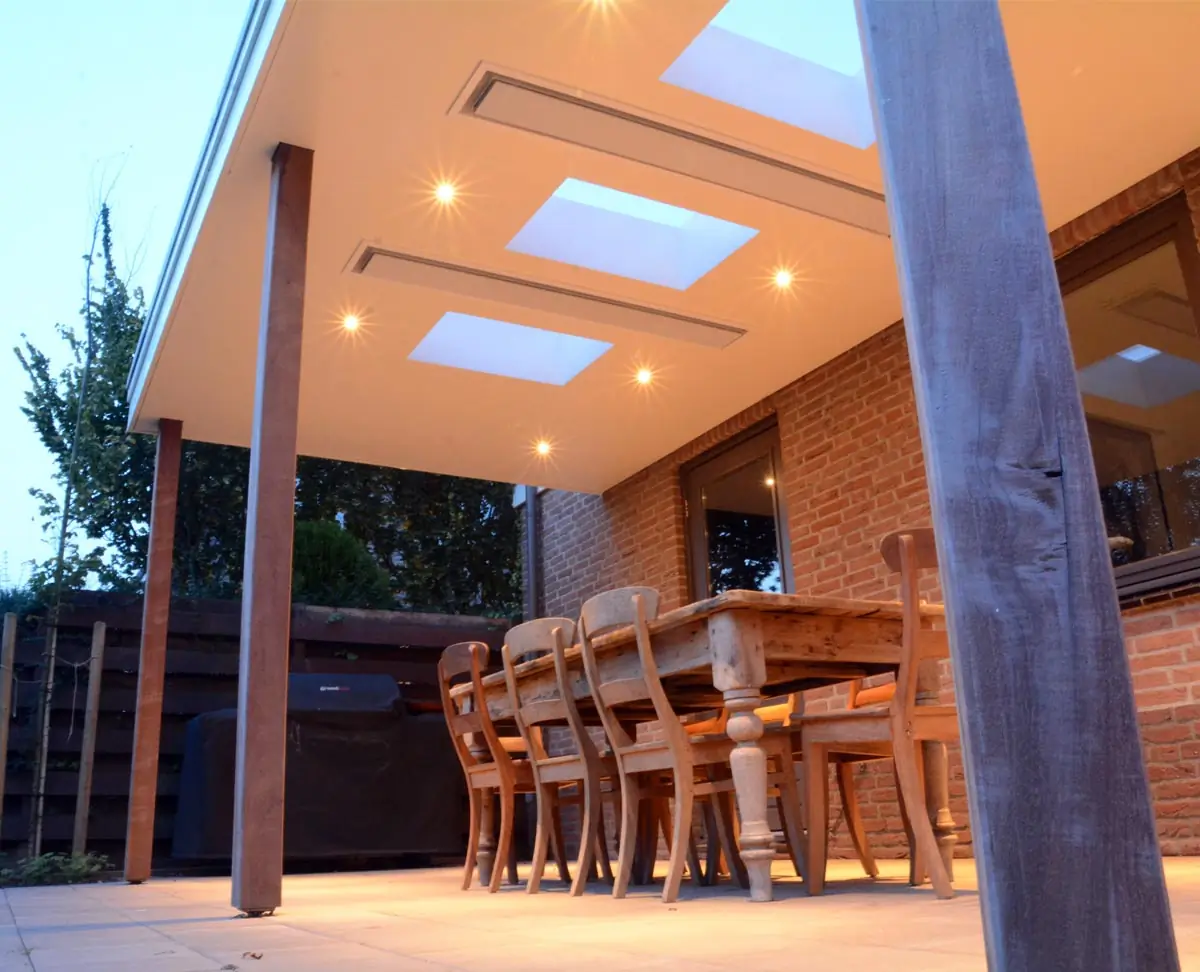10/10/2018

Patio Heating
Advantages of Radiant Panel Outdoor Heaters
Radiant panel outdoor heaters represent a modern evolution of gas patio heaters for outdoor heating installations. Their design offers the significant advantage of greatly reducing thermal gradients (high and low temperature differences). By favoring radiation, these heaters emit a majority of the heat directly towards surfaces, objects, and people present, rather than solely heating the surrounding air on the terrace. This makes them the most efficient choice for heating terraces, and outdoor radiators are also widely adopted by professional establishments.
The primary advantage of radiant terrace heaters is the instant feeling of comfort they provide. Their ability to extend the radiation area over the entire terrace surface makes them particularly effective. These solutions are highly recommended for spaces with a significant ceiling height, typically between 2.50 and 3.00 meters.
Radiant Heating for a Cozy Terrace
Among electric heating options, radiant terrace heaters, also known as radiant panels, hold a prominent place. Becoming increasingly popular, this intelligent and enjoyable heating system offers multiple advantages, making it the optimal solution for heating terraces and smaller, intermittently occupied outdoor spaces. Furthermore, with the growing integration of smart features, this heating method is becoming more economical.
Radiant heating, by directly warming surfaces, mimics the warmth of the sun and provides optimal comfort. Who hasn't felt pleasant warmth in the sun, even in cold outdoor temperatures?
Outdoor radiant heating is based on the same principle. The radiant radiator is a practical, efficient, and easy-to-use electric heating system. Also referred to as a radiant heater, it evenly distributes comfortable warmth over the terrace using radiation. Different device power ratings are available, ranging from 1600 to 3600 W. Unlike a gas convector, the radiant radiator does not rely solely on air to transfer heat but also on surfaces (walls, objects, and people) present in the area to be heated. This allows for gentle and consistent heat emission. For its operation, the outdoor radiator is equipped with thin resistors protected by a glass plate or perforated grille. These resistors heat a plate that radiates heat towards objects, thereby warming the ambient air and increasing the temperature.
Installation is quick, with simple wall mounting and connection to the electrical grid. The device should be placed without major obstructions in front of it. Depending on the model, it can also be hung or installed on a stand.
Optimal Maintenance for Your Terrace Heater
Regular maintenance is essential to ensure the proper operation of your terrace heater. It is recommended to remove and clean the grille once or twice a year using a sponge. Before any manipulation, make sure to disconnect the device or turn it off. Advantages and disadvantages of terrace heating: The radiator has many advantages that make it a popular choice for heating. Among the notable benefits are even heat distribution (with no temperature difference between the floor and ceiling), minimal humidification of the ambient air, and a healthy heating method that avoids the circulation of air, dust, and mites, making it recommended for asthmatic individuals. Furthermore, it offers rapid temperature rise. The aesthetic models of radiators, some of which may even resemble blackboards, make them decorative and design elements that can harmoniously integrate into any outdoor environment. Finally, this system allows for heating specific outdoor areas, such as a terrace.
This advantage is also environmental, as the radiant radiator does not consume oxygen and therefore does not emit CO2. Moreover, electricity in France mainly comes from decarbonized sources such as nuclear power.
